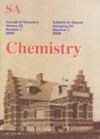Bioaccumulation and Human Risk Assessment of Heavy Metals in Oreochromis niloticus and Clarias gariepinus Fish Species from the Golinga Reservoir, Ghana
IF 1
4区 化学
Q4 CHEMISTRY, MULTIDISCIPLINARY
South African Journal of Chemistry-Suid-Afrikaanse Tydskrif Vir Chemie
Pub Date : 2021-01-01
DOI:10.17159/0379-4350/2021/V75A13
引用次数: 0
Abstract
ABSTRACT The Nile tilapia (Oreochromis niloticus) and African catfish (Clarias gariepinus) from the Golinga reservoir in Northern Ghana are consumed as an alternative source of protein. In the current study, levels of selected metals (As, Cd, Fe, Co, Cr, Cu, Mn, Mo, Ni and Pb) in the two fish species and the fish condition were determined, and potential human health effects assessed. The metal concentrations in the edible fish muscles ranged from 0.16 mg kg-1 (Mn) to 101 mg kg-1 (Pb). The weight-length relationships showed that both fish were growing isometrically, and bioaccumulation of metals from the reservoir was considered insignificant with bioconcentration factors below 100 except for Mn, whose value was 161 in the gills of Oreochromis niloticus. The health risk assessment showed that Pb, Cd and As had Target Hazard Quotient values above 1 for both fish species, with that of As being as high as 19.6 for Oreochromis niloticus. The target cancer risk values for As, Cd, Cr and Pb were above the non-risk threshold of <10-6, indicating the risk of cancer developing over the years due to fish consumption. The metal concentration in the fish in the reservoir should therefore be constantly monitored and potential health risks associated with frequent consumption of the fish assessed. Keywords: fish; health risk assessment; Nile tilapia; Target Hazard Quotient; trace metals加纳戈林加水库尼罗变色鱼和加里平克拉丽鱼重金属的生物积累及人体风险评价
来自加纳北部Golinga水库的尼罗罗非鱼(Oreochromis niloticus)和非洲鲶鱼(Clarias gariepinus)被用作蛋白质的替代来源。在目前的研究中,确定了两种鱼类中选定金属(As、Cd、Fe、Co、Cr、Cu、Mn、Mo、Ni和Pb)的水平和鱼类状况,并评估了对人类健康的潜在影响。食用鱼肌肉中的金属含量为0.16 mg kg-1 (Mn) ~ 101 mg kg-1 (Pb)。体重-长度关系表明,两种鱼均呈等长生长,除锰外,其他金属在尼罗提鱼鳃中的生物富集系数为161,当生物富集系数低于100时,其他金属的生物积累不显著。健康风险评价结果表明,两种鱼类的Pb、Cd和As的目标危害商值均在1以上,其中尼罗褐口鱼的As的目标危害商值高达19.6。As、Cd、Cr和Pb的目标致癌风险值均高于<10-6的非风险阈值,表明食用鱼类多年来存在致癌风险。因此,应不断监测水库中鱼类的金属浓度,并评估与经常食用鱼类有关的潜在健康风险。关键词:鱼;健康风险评估;尼罗罗非鱼;目标危险系数;微量金属
本文章由计算机程序翻译,如有差异,请以英文原文为准。
求助全文
约1分钟内获得全文
求助全文
来源期刊
CiteScore
3.10
自引率
0.00%
发文量
6
审稿时长
>12 weeks
期刊介绍:
Original work in all branches of chemistry is published in the South African Journal of Chemistry. Contributions in English may take the form of papers, short communications, or critical reviews.

 求助内容:
求助内容: 应助结果提醒方式:
应助结果提醒方式:


